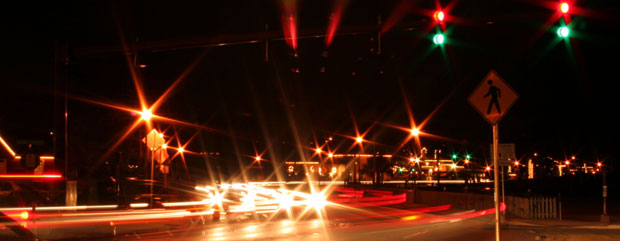- GIF It Up — very clever remix campaign to use heritage content—Friday is your last day to enter this year’s contest, so get creating! My favourite.
- Uber’s Drivers: Information Asymmetries and Control in Dynamic Work — Our conclusions are two-fold: first, that the information asymmetries produced by Uber’s system are fundamental to its ability to structure indirect control over its workers; and second, that Uber relies heavily on the evolving rhetoric of the algorithm to justify these information asymmetries to drivers, riders, as well as regulators and outlets of public opinion.
- ANNABELL — unsupervised language learning using artificial neural networks, install your own four year old. The paper explains how.
- Spinnaker — an open source, multi-cloud continuous delivery platform for releasing software changes with high velocity and confidence.
"Uber" entries


Four short links: 17 November 2015
Remix Contest, Uber Asymmetry, Language Learning, and Continuous Delivery

Improving Uber’s surge pricing
Should algorithmic pricing be the norm rather than the exception?

Request an invitation to Next:Economy, our event aiming to shed light on the transformation in the nature of work now being driven by algorithms, big data, robotics, and the on-demand economy.
Companies want a bigger share of the pie than their competitors, capital wants a bigger share than labor (and labor wants right back), countries want a bigger share than their rivals, but true wealth comes when we make a bigger pie for everyone. Well run markets are a proven way to do that.
Surge pricing is one of Uber’s most interesting labor innovations. Faced with the problem that they don’t have enough drivers in particular neighborhoods or at particular hours, they use market mechanisms to bring more drivers to those areas. If they need more drivers, they raise the price to consumers until enough drivers are incented by the possibility of higher earnings to fill the demand. Pricing is not set arbitrarily. It is driven algorithmically by pickup time — the goal is to have enough cars on the road that a passenger will get a car within 3–5 minutes. (Lyft’s Prime Time pricing is a similar system.) Uber keeps raising the price until the pickup time falls into the desired range.
This is clearly an imperfect system. In one case, surge pricing gouged customers during a crisis, and even in more prosaic situations like bad weather, the end of a sporting event, or a holiday evening, customers can see enormous price hikes. This uncertainty undercuts the fundamental promise of the app, of cheap, on-demand transportation. If you don’t know how much the ride will cost, can you rely on it?

Uber is breaking bad
Uber has built a great service. Why do they feel the need to use dirty tricks to succeed?
Tim O’Reilly has said that Uber is an example of designing for how the world ought to be. Their app works well, their cars are clean, their drivers are pleasant, and they usually arrive quickly. But more goes into the experience of a company than just an app. Corporate behavior is also part of the company’s design; perhaps not as noticeable as their Android or iPhone app, but a very real part. That’s where Uber falls down. They have increasingly been a bad actor, on many counts:
- Coercing their black car (Uber) drivers into driving for the low cost UberX service, which is much less profitable.
- Being disingenuous about the economics of driving for them. Justin Singer does an excellent job of deconstructing their claims. $90,000/year for a 40-hour work week? Think $40K. For a 70-hour work week.
- Badmouthing a competitor (Lyft) that is raising capital. As Fred Wilson says, this practice may be common, but it’s unethical and unproductive.
- Predatory (“surge”) pricing during peak hours, as much as seven times normal prices.
- Playing fast and loose with drivers’ background checks.
- And now one of their senior VPs has suggested researching and exposing the private lives of reporters who criticize them. He’s apologized, and said he never meant anything of the sort. Right. It’s not what you apologize for that counts; it’s not doing stuff you need to apologize for in the first place.
I could go on (advertising hot female drivers, abuses of their privacy policy, and more), but I won’t. You get the point. This is #GamerGate, but with a $17 billion valuation behind it. Read more…

What Amazon, iTunes, and Uber teach us about Apple Pay
Truly disruptive services don’t just digitize the familiar. They do away with it.
 Something’s been nagging at me about Apple Pay, and the hype about it.
Something’s been nagging at me about Apple Pay, and the hype about it.
The Apple-Pay web page gushes: “Gone are the days of searching for your wallet. The wasted moments finding the right card. The swiping and waiting. Now payments happen with a single touch.”
What’s wrong with this picture?
It’s describing the digital facsimile of a process that is already on its way to becoming obsolete. But truly disruptive new services don’t just digitize the familiar. They do away with it.
I never search for my wallet when I take an Uber. I never search for my wallet when I walk out of a restaurant that accepts Cover. I never search for my wallet when I buy something from Amazon. I don’t even search for my wallet when buying a song from iTunes — or, for that matter, an iPhone from an Apple Store.
In each of these cases, my payment information is simply a stored credential that is already associated with my identity. And that identity is increasingly recognized by means other than an explicit payment process. Read more…
